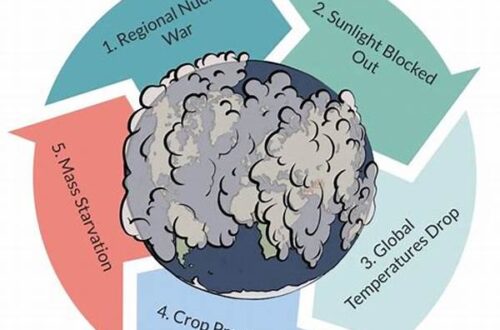In recent years, the detrimental effects of military operations on the environment have gathered significant attention. The phenomenon of “pollution from military engagements” refers to the environmental degradation and contamination resulting from various military activities, from battlefield operations to training exercises. Evaluating this form of pollution is critical, given its long-term effects on natural ecosystems and human health.
Environmental Impact of Military Activities
Military engagements often involve the use of heavy machinery, explosives, and chemicals, all of which contribute significantly to environmental pollution. The residue of explosive materials not only contaminates soil but also poses serious health risks to humans and wildlife. Furthermore, the use of vehicles and aircraft leads to a substantial increase in carbon emissions, exacerbating the issues of air pollution and global warming. Such pollution from military engagements is pervasive and can persist long after the conflicts cease, impacting local communities that depend on clean resources for their livelihood.
Another significant contributor to pollution from military engagements is the destruction of ecosystems. As militaries maneuver through different terrains, they often disrupt local flora and fauna, leading to habitat loss and decreased biodiversity. Maneuvering tanks and other military vehicles can cause soil compaction, rendering it inhospitable for vegetation, which is essential for a balanced ecosystem. It is essential to recognize and mitigate these impacts to prevent long-term ecological damage and ensure environmental sustainability.
Sources of Military-Related Pollution
1. Military vehicles and aircraft emit large quantities of greenhouse gases, contributing to global pollution levels. This exemplifies the pollution from military engagements as a significant concern for climate change.
2. The use of ammunition and explosives leaves toxic residues. These pollutants from military engagements permeate the soil and water systems, posing health risks to both humans and the environment.
3. Waste generated from military bases, including hazardous materials and chemicals, significantly contributes to pollution from military engagements. This requires stringent waste management practices to minimize impact.
4. Training exercises, often using live ammunition, can result in environmental degradation and pollution. These maneuvers illustrate how routine military operations lead to pollution from military engagements.
5. The destruction of infrastructure during conflicts results in the release of pollutants, further escalating the pollution from military engagements. Recovery and rebuilding efforts often face challenges due to these conditions.
Mitigating the Environmental Damage
Addressing pollution from military engagements requires a concerted effort from governments, international bodies, and military organizations. Implementing environmentally sustainable practices within military operations is imperative. This could involve reducing fossil fuel dependency by switching to renewable energy sources wherever feasible. Advances in technology, such as electric military vehicles, could also help lessen the environmental footprint of military activities.
Moreover, awareness and education about the environmental impact of military actions are crucial for long-term change. By integrating environmental considerations into the planning and execution stages of military operations, officials can make informed decisions that significantly reduce pollution from military engagements. Another effective strategy would be the rehabilitation of environments affected by past military activities, thus restoring ecosystems and promoting biodiversity.
Strategies for Environmental Restoration
1. Establishing stricter regulations for waste disposal on military bases can greatly diminish pollution from military engagements. It ensures proper handling of hazardous ingredients.
2. Developing international accords focused on reducing military-related pollutants will create collaborative efforts. These efforts tackle pollution from military engagements on a global scale.
3. Investments in research and development to identify substitutes for toxic materials utilized in military operations can mitigate pollution from military engagements significantly, making activities more eco-friendly.
4. Regular assessments and environmental audits post-conflicts could assist in quantifying pollution from military engagements. This also aids in the implementation of efficient restoration measures.
5. Advocating for non-combat-related military exercises reduces the dependency on live ammunition, subsequently decreasing pollution from military engagements. This encourages a shift toward sustainable operational practices.
6. Promoting policies for reforestation and land restoration in conflict zones repairs damage caused by pollution from military engagements. These restoration efforts support revitalized habitats and communities.
7. The creation of environmental military units specifically trained to handle and prevent pollution from military engagements could lead to improved environmental stewardship within the armed forces.
8. Encouraging transparency and accountability regarding the environmental costs of military actions motivates better compliance and enforcement of eco-friendly practices to reduce pollution from military engagements.
9. International collaborations on new technologies for effective decontamination of land and water will significantly alleviate the impacts of pollution from military engagements.
10. Initiating public-private partnerships aimed at addressing the pollution from military engagements could leverage resources and expertise for solving complex environmental challenges more effectively.
The Role of Policy in Addressing Pollution
Policies play a crucial role in mitigating the consequences of pollution from military engagements. Governments and regulatory bodies must enforce environmental regulations that restrict the use of hazardous materials and mandate responsible waste management practices. Policy frameworks should aim to incentivize cleaner technologies and leverage international cooperation to address the global dimensions of military-related pollution.
Moreover, integrating environmental concerns into defense and security strategies ensures that military objectives align with sustainable development goals. Public reporting on military environmental impacts fosters transparency and public accountability, pressuring military entities to adopt green practices. As countries seek to balance their defense requirements with environmental responsibility, informed policies become an essential tool in achieving sustainability.
Conclusion
Pollution from military engagements represents a pressing environmental challenge. It requires immediate attention and strategic intervention from all stakeholders involved. The ecological ramifications of military activities extend beyond national borders, highlighting the global nature of the issue. Therefore, fostering international collaboration and adhering to stringent environmental standards can curtail the adverse effects of military-related pollution. By doing so, we pave the path toward a greener, more sustainable future for generations to come.





